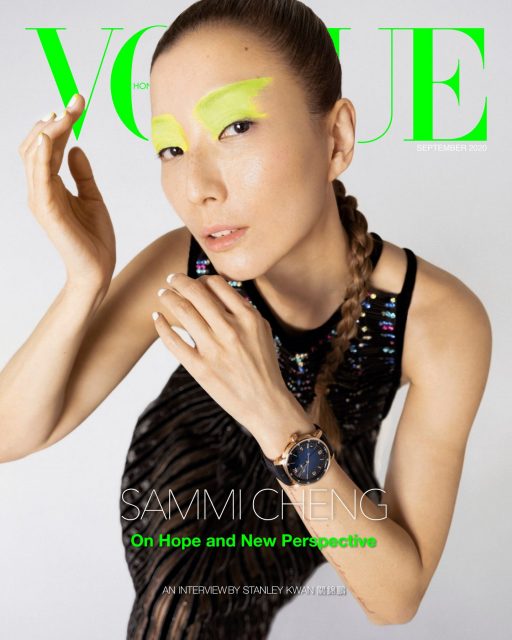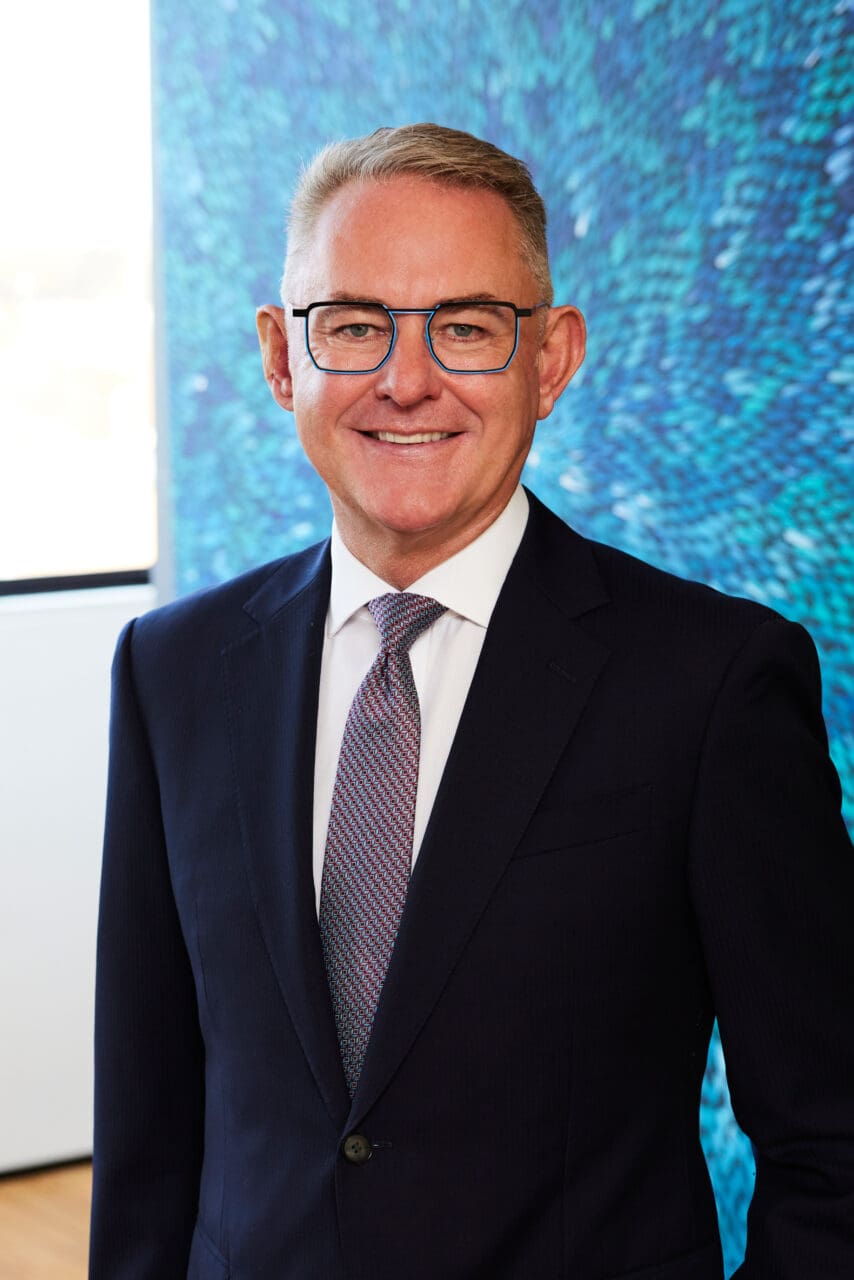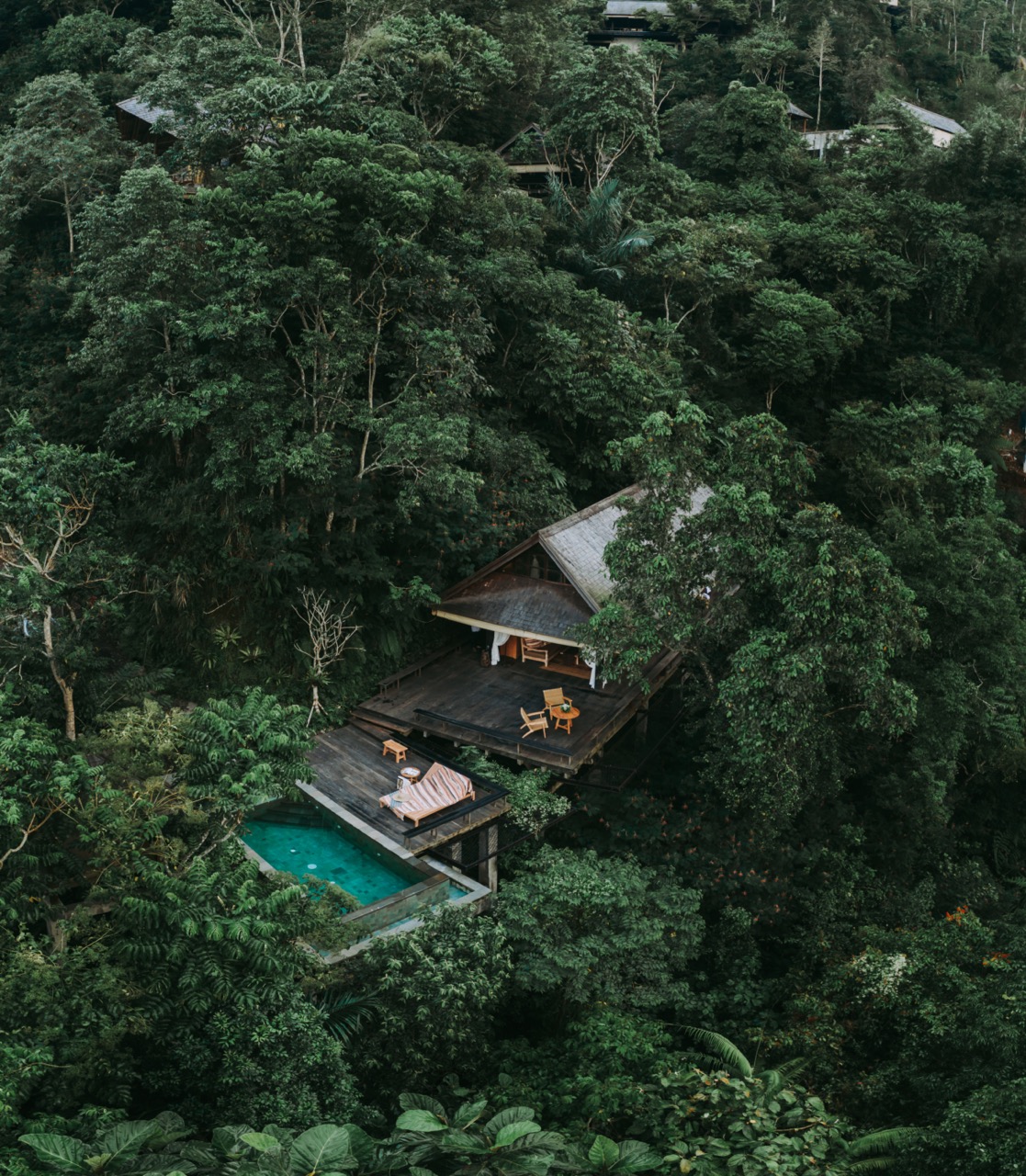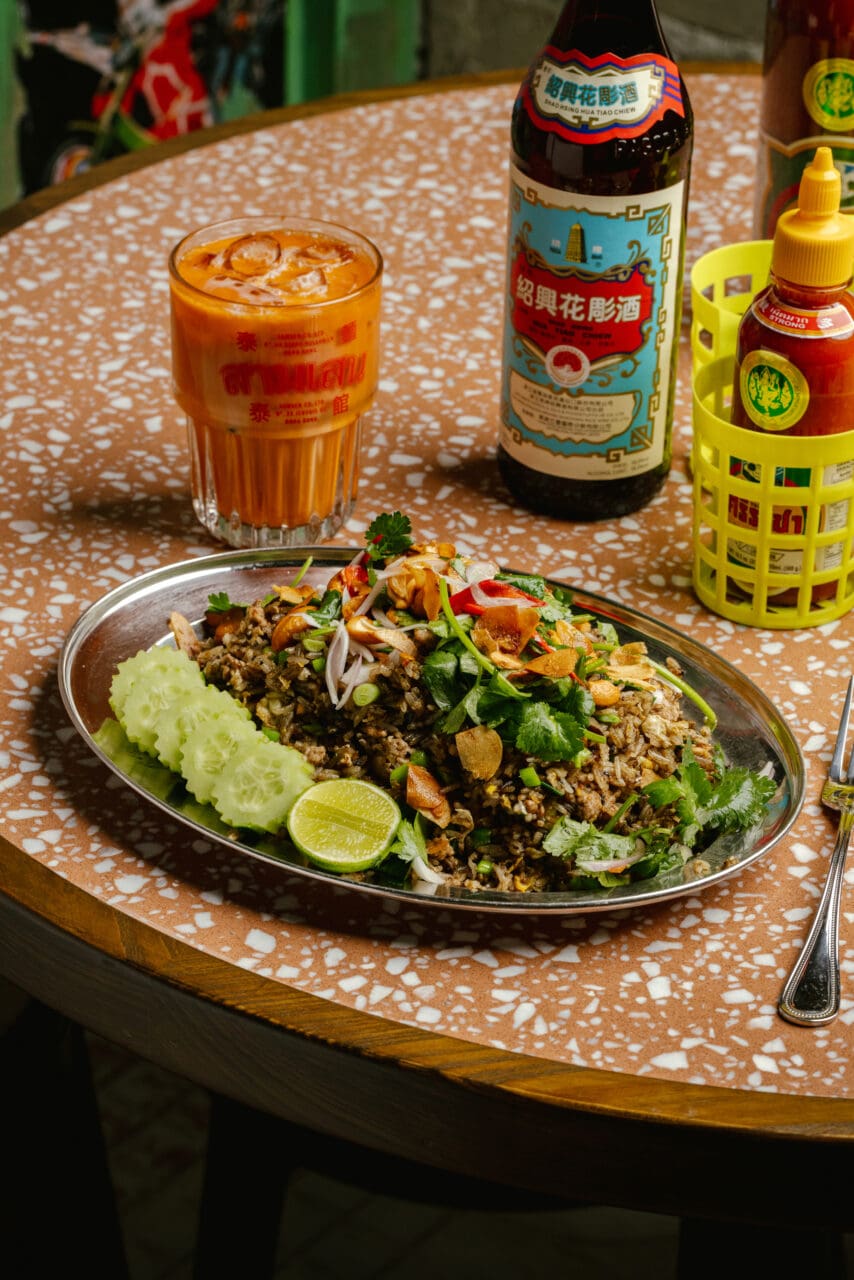When India Amarteifio first saw Bridgerton, she was “completely overwhelmed by all these people who looked like me in period dress. I thought, ‘I want to be a part of this.’” Now, she will be: the 21-year-old actor from south-west London is poised to take the lead as the younger incarnation of Golda Rosheuvel’s character in Queen Charlotte: A Bridgerton Story, the Regency romance’s hotly anticipated prequel centred on the teenage years of the titular monarch, believed to be Britain’s first mixed-race royal.
Penned by Shonda Rhimes herself, the Netflix extravaganza opens with Charlotte’s arrival in 18th-century London, aged just 17, from her native Germany. Against her will, she’s betrothed to the young King George III (Corey Mylchreest), a man she has never met, and – in the show’s reimagining of history – is eager to plot her escape. But then, despite herself, she slowly falls in love with her new husband and begins settling into her position of power. At first, she feels like a fish out of water in a largely white court, and faces immense pressure from her mother-in-law (Michelle Fairley) to provide heirs, but once she finds her voice, she manages to spark a remarkable societal shift that lays the foundations for the thrillingly diverse world of the original series.
I know you were a child actor. When did you make your screen debut?
I was in a Vodafone advert with my mum when I was eight months old. I only found out about it the other day – she told me they did an open call and she just rocked up with me [laughs]. Growing up, I loved theatre and dance, and when I was nine, I auditioned for The Lion King in the West End. I did that for about a year, then moved onto Matilda, then Charlie and the Chocolate Factory. Around that time, I got a scholarship to Sylvia Young Theatre School. When I was 12, I was doing West End Live with them in Trafalgar Square – we were doing Little Shop of Horrors and I was dressed as a tree. I hadn’t warmed up properly and I jumped into the splits and felt my hamstring tear. I carried on in the moment, but then, as I got older, I realised it might never properly heal. I was always trying to push myself and kept pushing on the injury. We had a careers evening when I was 14, and I started thinking: “If I keep doing this, I’ll have a short career.” So, I started focusing on acting and ended up getting small roles in Doctor Who, The Tunnel and Sex Education.
When did you first hear about Queen Charlotte?
In November 2021, my agent called me to say I had an audition and it was something to do with Bridgerton, but not the third season. I did a tape and then had about five different auditions, and chemistry reads with Corey and Arsema [Thomas, who plays the young Lady Danbury]. I found out about four or five days later that I’d landed it and then we went straight into rehearsals. It was really bizarre and surreal – Bridgerton is its own universe, like Marvel. It felt so unreachable, and it didn’t feel real for the longest time. It was probably when I went in for my first costume fitting that I thought, okay, this is actually happening. My early chats with Shonda and Tom [Verica, the show’s director] helped, too. They were adamant that they didn’t want me to emulate anything that Golda had done – I could create my own Charlotte. As a teenager, she’s very inquisitive and headstrong. She knows herself but she’s also not afraid to falter. Her actual history gave me more than I needed in terms of background.
How helpful was it to know all of that history when Queen Charlotte, like Bridgerton, is primarily a fantasy?
It’s definitely not a historical retelling – it’s a reimagining of history, so that gave us a lot of freedom. But also, there are nods to the real history, too: we see Charlotte travelling from Germany, her relationship with her brother, her dogs, the snuff. I did as much research as I thought was sensible. I read Janice Hadlow’s book about Georgian history [The Strangest Family: The Private Lives of George III, Queen Charlotte and the Hanoverians], and I went to Kew Gardens, where they lived, and saw her cottage. We got to have a private tour and I even saw the armchair Charlotte died in. [The Queen was suffering from dropsy in 1818, which causes painful swelling and eventual organ failure, and was mostly confined to her bedroom during her final days.] Being there, I felt such a connection to her.
And how much pressure did you feel when you finally arrived on set?
I was constantly overwhelmed – going into Blenheim Palace felt like the biggest thing ever, but then the costumes were just gorgeous, and the jewellery, and all the sets were huge. I was like, “Oh my God!” and that was perfect because Charlotte’s entering this new world too. There’s a lot riding on it obviously, but when we were on set, there were also moments when you forgot how big it was and you felt like you were just making a film with your friends. I think if I’d constantly been thinking about people’s expectations of the show, it would’ve been too much.
From the first stills, you can see that the costumes are incredibly detailed. What do you hope viewers spot?
Lyn Paolo created the costumes and they’re incredible. I know a lot of Bridgerton fans are eagle-eyed about characters wearing different colours and how that reflects their emotions, and we considered that for Queen Charlotte too. Charlotte is really fun to play because she’s quite expressive – she’ll say what’s on her mind, but she’ll also show you. The details are amazing as well. For instance, King George was really interested in astronomy and, as the series progresses, you can spot little stars and astrological signs in Charlotte’s looks. It’s a visual representation of her connection to him, and those motifs are often literally close to her heart. I thought that was beautiful.
What were the most difficult parts of the shoot?
The emotional scenes, definitely. I’m quite an empathetic person and there are a lot of scenes where Charlotte is really distraught, and with good reason. Having to access that was difficult. As an actor, you want to be protective of yourself. You shouldn’t pick at scabs, in the sense of making yourself feel emotions that you yourself haven’t healed from. So, having to think about the things I’ve gone through which are similar to what she’s going through – it was a lot. It was important to be in it, but also to come out of that and not bring it home with you.
What were the things you related to?
I’m mixed race. I’ve got a white mum and my dad is Black – born in London, but with Ghanaian ancestry – so I can relate to her in terms of not really knowing where you fit in. I know what it’s like to walk into a room and have everyone look at you because you’re the only person of colour. There are so many scenes, especially early on in the series where Charlotte does exactly that. In those moments, you feel alone and awkward, and it can be uncomfortable to talk about it, but by writing those scenes, Shonda’s starting that conversation and showing people that they aren’t alone. She’s also created spaces where you’re not alone as a person of colour, and she’s diversifying these genres that, before this, weren’t really open to people like me.
For you and Shonda, was that one of the main reasons for creating the show, to shine a light on those sorts of experiences that people continue to have?
There were so many reasons to create it. In Bridgerton, Golda created this iconic character, this mixed race woman who people saw as a queen, and that’s not something we really see. When I got the script for Queen Charlotte, I thought, “When I was 15, did I ever see myself represented as a queen? Never.” And this isn’t a story about misfortune – it’s about a Black woman who, against all odds, became part of one of the most powerful monarchies in the world. We don’t brush the subject of race under the carpet, either – we explore it. She is different but that’s not the issue – it’s society that needs to change. For me, it would’ve been an honour to be part of the Bridgerton universe anyway, but it’s even more special because this show lays the foundations for Bridgerton and shows us how that world became so diverse and beautiful. We also look at class, mental health, sexuality and gender, and I feel like all of that is so important. It’s about shining a light on so many things that people have been feeling but maybe haven’t been able to voice.

Amarteifio with Corey Mylchreest’s King George in the sixth episode of Queen Charlotte: A Bridgerton Story.
Photo: Nick Wall via Netflix
With the release date now fast approaching, are you more nervous or excited at this point?
I’m so excited! I hope people love it. There is some apprehension on my part, because I don’t know what my life is going to look like after this, but I’m going into it with an open mind and no expectations. I just want it to come out at this point so that I don’t have to keep biting my tongue or saying something and then being like, “Please can that be off the record?” [laughs].
And what can we expect to see you in after that?
I’d love to do some more theatre, but I’m enjoying having a bit of a break at the moment after six months of quite intense filming. Right now, I’m learning the bass guitar – it’s a lot harder than I thought – and catching up on sleep. I feel like I’ve had a baby.
Editor
Radhika SethCredit
Lead image: StillMoving.net for Netflix






